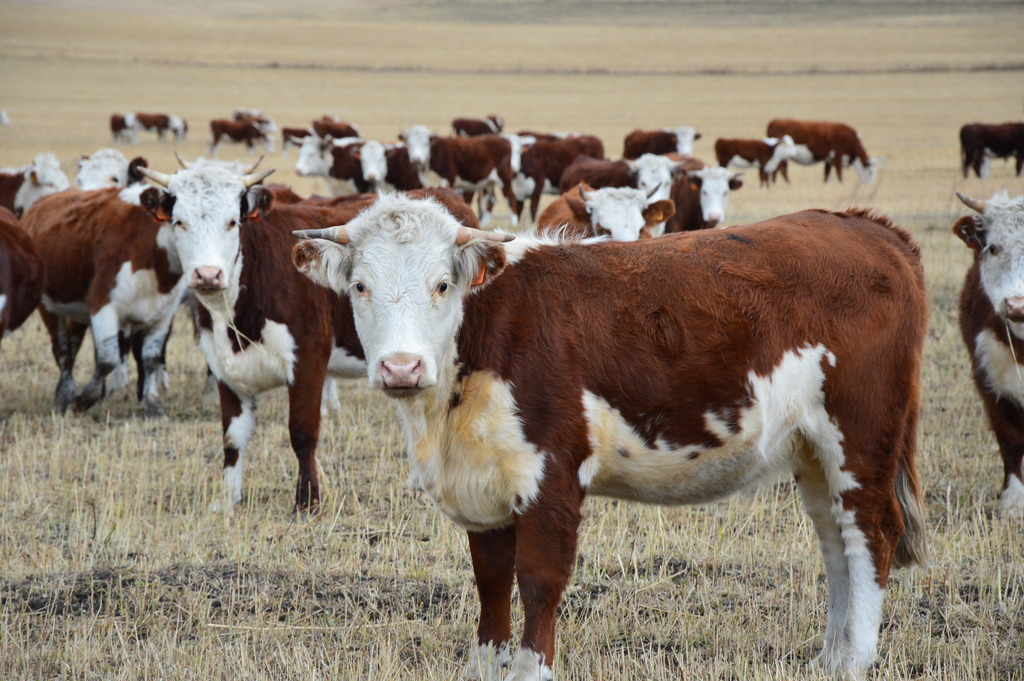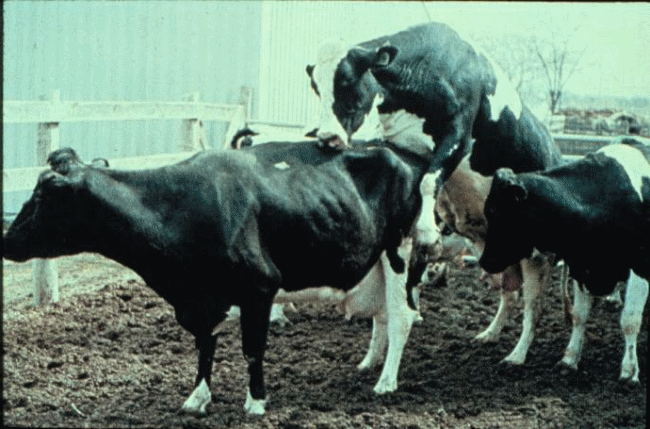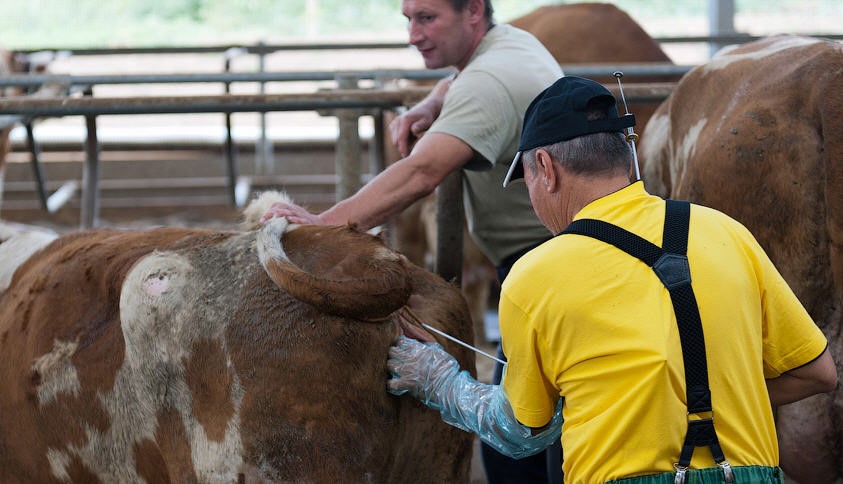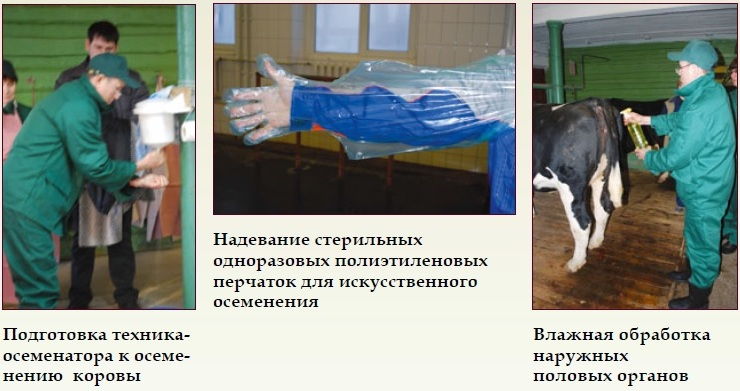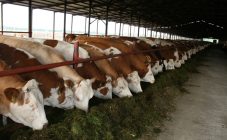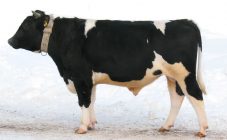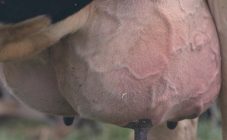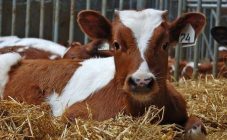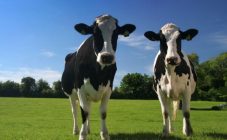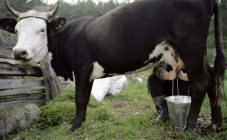Content:
When raising cattle, it should be remembered that only competent maintenance and maintenance of sanitary and hygienic standards will ensure the animals a long life and good health.
Cow care rules
General requirements for caring for a cow include cleaning, bathing pets and trimming hooves. Regular veterinary checkups can detect early symptoms of infectious diseases and prevent death.
Transfer to pasture or stall keeping should be carried out gradually, allowing animals to adapt to new conditions and prepare the gastrointestinal tract for changing feed.
Raising cows is a lucrative business. Successful marketing of meat and dairy breeds can bring significant benefits. However, breeding cows is a specific process that requires preparation before insemination of cattle.
You can fertilize cows naturally with the help of a bull or artificially. Being polycyclic, cows are able to bear offspring throughout the year. There are behavioral signs of willingness to mate. Excitement, decreased appetite, increased physical activity are signs of the onset of estrus.
Insemination methods for cows
Insemination of cows is a complex of measures for the preparation and conduct of the procedure.
To carry out artificial insemination of cows, you will need to bring the animal to a specially equipped laboratory center, consisting of a riding hall, the laboratory itself and a sink. The laboratory implies the presence of:
- microscope;
- reagents;
- utensils for disinfectants.
The washing room must have a place for washing and processing dishes and equipment, a set of overalls. The set of the arena may include several machines for fixing animals and insemination.
According to the instructions of the Ministry of Agriculture of the Russian Federation, artificial insemination of cattle can be carried out in several ways: mano-, viso, and retrocervical.
Preparing cows for insemination
Before carrying out the insemination procedure, it is necessary to sanitize the premises. It is not recommended to use aggressive solutions, replacing them with a solution of potassium permanganate.
The area near the anus must be cleaned of contamination. Then wash the back half of the body with soapy water, rinsing with furacilin. Such measures will reduce the risks of infection of the cow during the fertilization process.
Insemination of cows
How are cows inseminated? Insemination of cows can take place in several ways. This can be free mating, bull insemination, or artificial insemination with a pre-collected ejaculate by a veterinarian.
With free mating, the bull is constantly in the herd of cows and covers as many individuals as it can. The downside of this method is the inability to track which cows it covered.
Cow inseminator
How can a cow be inseminated? The use of inseminating bulls will be called natural breeding. To do this, you need to carefully choose the male. A robust and healthy cow inseminator must be tested for infectious diseases. This is an energy consuming process, so the use of the bull should be limited during the breeding season. The maximum load per bull is 30-40 heifers per season. With more frequent use, the bull is exhausted. For older bulls, the load should be reduced.
Mating of animals takes place in a separate arena equipped with a machine. In the pen, the bull rests with its front legs not on the cow, making the process easier. Mating should be repeated after 12-15 hours.
Artificial insemination of cows
Artificial insemination is a carefully planned exercise under the supervision of a specialist. For this, ejaculate is collected in advance and tested for fertilizing ability in laboratory conditions.
In this way, the maximum efficiency of fertilization of females is achieved. Compliance with the rules and norms of hygiene allows you to safely carry out the entire process. In addition, this way you can select and combine the traits of the parents that are necessary for the offspring.
Rectocervical insemination of cows
The advantage of the method is the accuracy of the correct entry into the cervical canal of the uterus, thanks to fixation through the anus.
For manipulations required:
- disposable syringes 2 ml;
- polyethylene ampoules 48 mm;
- polystyrene catheters 35-42 cm;
- disposable gloves 80-90 cm.
The manipulation scheme is as follows. Before being completely removed from the package, the catheter should be tightly connected to the syringe or ampoule using a sleeve. Then it can be completely removed. Using an ampoule or syringe, collect semen (1-1.2 ml) from a previously prepared vial into the catheter.
After fixing the animal, treat the external genitals with a disinfectant solution. Part the labia with a gloved hand, you need to insert the catheter without touching them into the vagina. The limiter at this moment is the junction with the syringe. To avoid getting the catheter into the urinary tract, insert it 15 cm from the bottom, then pull it up at an angle of 20-30 ° and horizontally to the end.
Soak your hand in warm water or saline and insert it into your anus. This position will allow you to control the progress of the catheter through the vagina. If it gets stuck in the vaginal fold, you can move the uterus back by straightening the vaginal wall.
Fix the cervix with a brush so that you can guide the movement of the catheter with your fingers. When the catheter enters the uterus, movements should be performed to pull the cervix onto the catheter.
When passing 6-10 cm with a catheter, sperm should be carefully inserted. The maximum effect can be achieved with full passage of the cervical canal and the ingress of sperm into the uterine cavity.
After the procedures, the arm must be removed from the rectum. Disconnect the syringe from the catheter by slowly pulling it out of the vagina.
Diy cow insemination machine
To assemble the insemination machine, you will need to build a box with two inputs yourself. In the front outlet, you need to make a notch for the neck. By installing belt mechanisms, fixing them on the upper beams, you can provide additional fixation of the animal. The rear door with an opening for the hands must close tightly to prevent injury to the technician.
The machine can be made of wood or metal. In both cases, it is necessary to process the material for damage.
Cow behavior after insemination
The covered animal becomes calmer, appetite returns.After 1.5-2 months after coating, sticky mucus is released from the genital opening of the heifer. The appearance of a softer coat is also a sign of pregnancy. Furrowing is considered a sign of failed fertilization.
Tips and tricks for livestock breeders
It is more effective to inseminate a cow in the second stage of sexual heat with an interval of 10-15 hours. A cow ready to be coated can be calculated by the immobility reflex or by the change in the appearance of the genitals.
Cow quarters should be well lit and ventilated. Individuals should be grazed regularly. Walking should be required to improve the circulation of the reproductive system.
Compliance with sanitary and epidemiological standards will prevent infection of cows in the process.
In conclusion, we can say that the process of insemination of cows can be carried out in three ways. Each of them has advantages and disadvantages. To obtain guarantees of coverage, it is better to use an artificial method, which implies the introduction of bull semen into the uterine cavity of the cow by a specialist. A preliminary analysis of the quality of the ejaculate and for the presence of infections will avoid a negative result.
